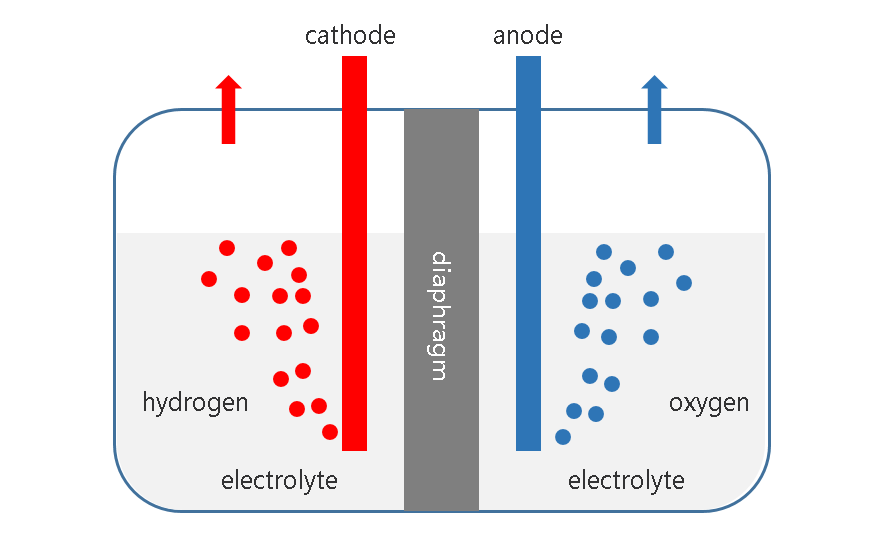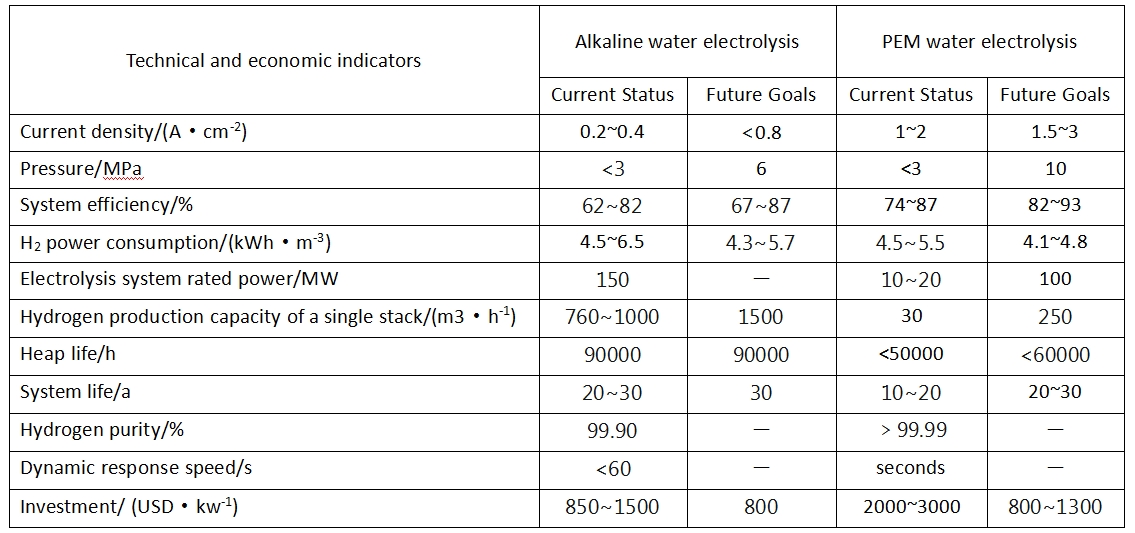- English
- Español
- Português
- русский
- Français
- 日本語
- Deutsch
- tiếng Việt
- Italiano
- Nederlands
- ภาษาไทย
- Polski
- 한국어
- Svenska
- magyar
- Malay
- বাংলা ভাষার
- Dansk
- Suomi
- हिन्दी
- Pilipino
- Türkçe
- Gaeilge
- العربية
- Indonesia
- Norsk
- تمل
- český
- ελληνικά
- український
- Javanese
- فارسی
- தமிழ்
- తెలుగు
- नेपाली
- Burmese
- български
- ລາວ
- Latine
- Қазақша
- Euskal
- Azərbaycan
- Slovenský jazyk
- Македонски
- Lietuvos
- Eesti Keel
- Română
- Slovenski
- मराठी
- Srpski језик
Advantages of PEM electrolysis water hydrogen production technology
2024-04-02
Hydrogen production by water electrolysis means that water molecules are dissociated under the action of direct current to generate oxygen and hydrogen, which are precipitated from the anode and cathode of the electrolyzer respectively.

According to the different materials of the electrolyzer diaphragm, hydrogen production from water electrolysis is usually divided into alkaline water electrolysis (ALK), proton exchange membrane (PEM) water electrolysis and high-temperature solid oxide water electrolysis (SOEC).
Among them, PEM water electrolysis to produce hydrogen refers to a hydrogen production process that uses a proton exchange membrane as a solid electrolyte and uses pure water as the raw material for electrolyzing water to produce hydrogen.
The main components of the PEM water electrolyzer are, from inside to outside, the proton exchange membrane, cathode and anode catalytic layers, cathode and anode gas diffusion layers, cathode and anode end plates, etc.
The diffusion layer, catalytic layer and proton exchange membrane constitute the membrane electrode, which is the main site for material transmission and electrochemical reactions in the entire water electrolyzer. The characteristics and structure of the membrane electrode directly affect the performance and life of the PEM water electrolyzer.

PEM hydrogen production has the following advantages compared to traditional alkaline water electrolysis hydrogen production:
①High purity, no pollution
PEM hydrogen production uses a proton exchange membrane solid electrolyte. The gas generated does not need to be dealkalized, and the thickness of the molecular-level microporous ion membrane is very small, making it difficult to produce hydrogen reverse osmosis. The PEM type only requires pure water, no additives, and no corrosive liquids, so it does not pollute the environment and has high gas purity; while traditional alkaline electrolyte requires the addition of 15% NaOH or 30% KOH, so the electrolysis The liquid is highly corrosive and can easily cause flushing liquid to contaminate the load pipeline.
②High conversion efficiency
The PEM type catalytic electrode is a molecular-level micropore, which is close to both sides of the ion membrane and between the internal pores. It is a zero-pole distance catalytic electrode. Its advantages are large reaction area and high conversion efficiency; while traditional alkaline electrodes There is a small distance limit between the electrodes, and the resistance between the electrodes is large, resulting in larger current, high heat generation, and low conversion efficiency.
③Light weight and small size
The current collector structure of the two-stage chambers in the PEM type electrolyzer is compact and elastic, making the electrolyzer light and small in size. The weight is only 1/3 of an ordinary electrolyzer with the same hydrogen production capacity. The advantage is zero pole distance. The internal resistance of the cell is small; while the current collector in the inner electrode chamber of the traditional alkaline electrolytic cell has no elasticity, resulting in high heat loss of electrical energy and low conversion efficiency.
④ Adaptable to the volatility of renewable energy power generation
The PEM electrolysis water hydrogen production system has a fast response speed and is adaptable to dynamic operation, which is very suitable for the uneven, intermittent and fluctuating nature of renewable energy sources such as wind energy and solar power transmission.
From a technical point of view, the electrolytic cell used has a compact structure and small size, which is conducive to rapid load change. The electrolytic cell has high efficiency, high purity of gas obtained, low energy consumption, and greatly improved safety and reliability, making it more suitable for renewable energy sources. Due to the volatility of renewable energy, PEM water electrolysis technology is known as one of the most promising water electrolysis hydrogen production technologies in the field of hydrogen production.
However, since PEM electrolyzers need to operate in a highly acidic and highly oxidizing working environment, the equipment is more dependent on expensive metal materials such as iridium, platinum, titanium, etc., resulting in high costs. This is also the bottleneck restricting the development of PEM hydrogen production technology and the direction of research and development.





